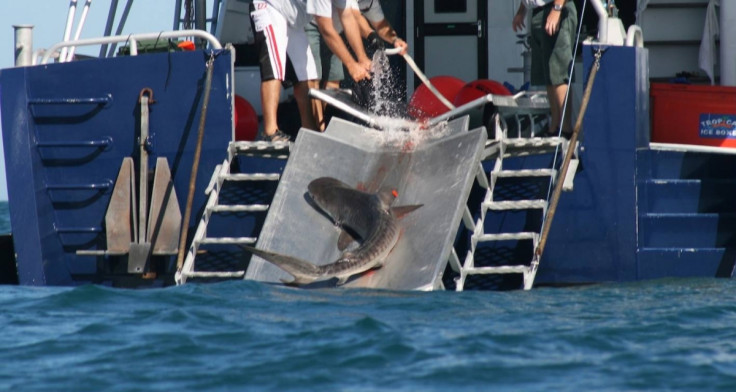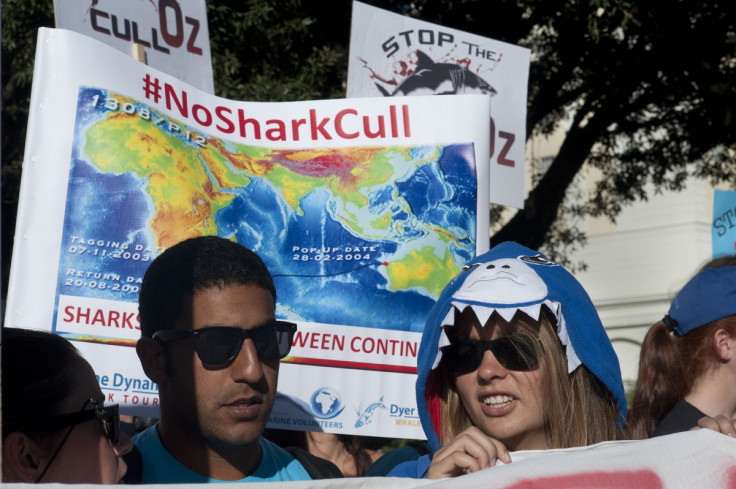WA Shark Cull: 'Ridiculous' Logic Serves Only to Quell Public Fears and Protect Tourism

The logic behind the shark cull in Western Australia is "ridiculous" and serves only to subdue public concerns about attacks and protect tourism, a marine biologist has said.
Chris Lowe, professor of marine biology at California State University, said that if the shark cull is extended to 2017, as being pushed for by the WA Government, it has the potential to lead to even more attacks because of the "false sense of security" a cull brings.
The three month trial of the shark cull in WA ended at the start of the month and authorities announced 172 sharks had been killed. However, the cull failed to catch any great white sharks – those believed to be responsible for the seven deaths between 2010 and 2013.
Speaking to IBTimes UK, Lowe said: "This is like a script from the movie Jaws. It's really about quelling public concerns for tourism issues. In all the places where these things occur, they tend to be very popular tourism destinations. The concern of how that can impact local economies is a huge one. Many shark biologists are now of the opinion, based on decades of growing data sets, that this doesn't work."
Lowe analysed data from a series of shark culls that took place in Hawaii from the 1950s. He found the culls, which resulted in almost 5,000 sharks being killed, had "no measurable effect" on the rate of shark attacks.

He said culls are based on the logic that if you reduce the number of sharks in the ocean, you reduce the number of attacks. Shark attacks are increasingly slightly, he said, but this is due to conservation programmes that countries across the globe have spent huge amounts of money implementing.
"When you look at the number of people in the water every year, it still clearly demonstrates that sharks don't see people as something on their menu. In fact what we see is that they avoid the most crowded beaches. So is it worth performing culls or should we be educating the public about how we're going to have to learn to share the ocean with predators again.
"As we see shark populations recover, due to protection, the rate of incidents will go up a little bit. But the main point we're making is that it's not going up nearly as fast as the rate of shark population growth and the increasing number of people going in the water.
"It's this unrealistic fear [of shark attacks] that's driving many of these ridiculous policies that are undermining all the things we've been trying to do for decades - bring populations back."
Lowe said that another issue facing the WA Government - if it goes ahead with the cull - is the potential for liability: "You go out and kill a bunch of sharks, string them up and show off the pictures, to show the public that you're doing something.

"But what happens if one month after the culling programme someone gets bitten? Could you be liable for that?" he said, adding that another finding from his research is that people will undertake more risky behaviour after a cull because they believe the water to be safe.
He suggested that from an education perspective, swimmers should be told: "User beware: the ocean is a wild place, there are wild animals and if you're worried about this, the simple answer is don't go in the ocean. If you do go in, understand the risks.
"There's a proportion of the public that now has this belief that their safety should be guaranteed everywhere they go and that it's the government's responsibility to do that. And we've had several generations that are just not used to predators, whether they are mountain lions or tigers or sharks. We've annihilated predators from those habitats and we've now recognised that their populations have been decimated."
Lowe said that while countries have spent vast amounts of money bringing these predators back from the brink of extinction, people now lack the understanding of what comes with this.
As well as potentially increasing the risk of attacks, Lowe also said the effects of damage done to ocean ecosystems could last for centuries.
"The one thing we know about these predator populations is that they have lifespans like humans. They take 12-20 years to reach sexual maturity and they only give birth every two or three years. So you can do a lot of damage to those populations and it can take decades if not centuries for their populations to recover with adequate protection. It's a risky thing to do just for the sake of trying to massage people's fears."
© Copyright IBTimes 2025. All rights reserved.






















